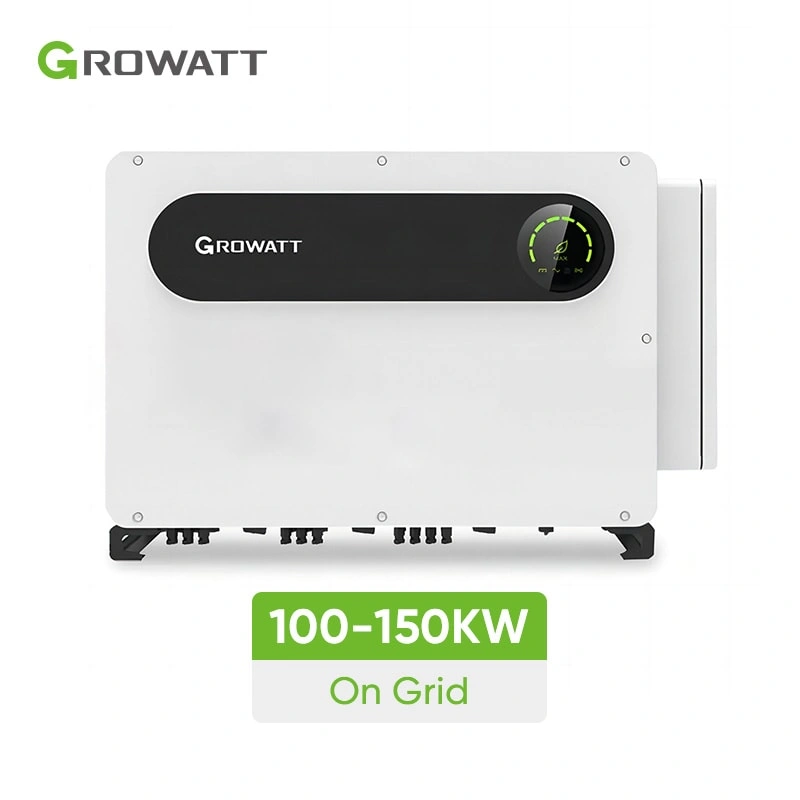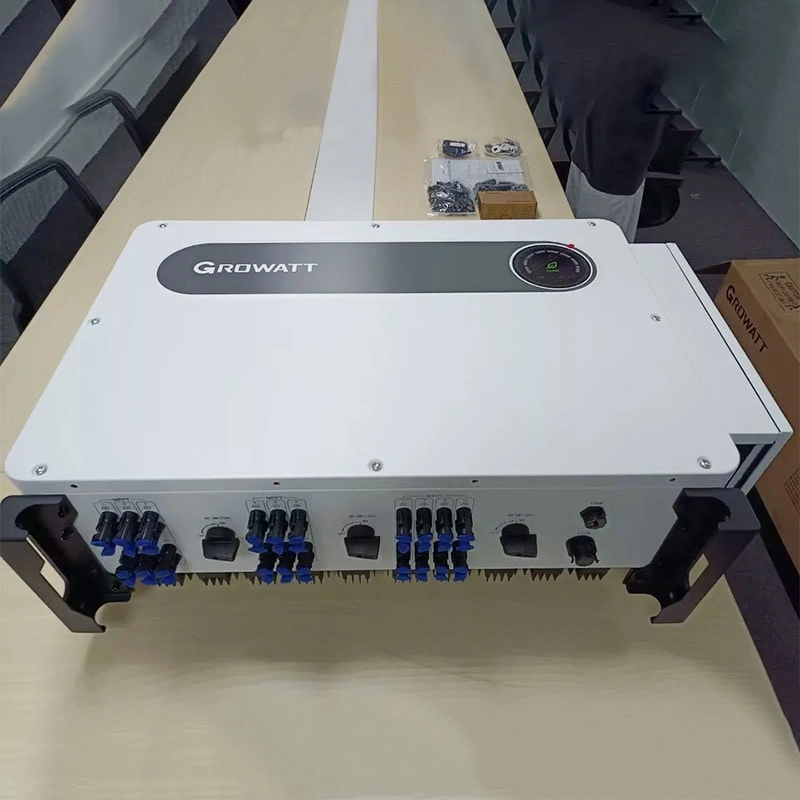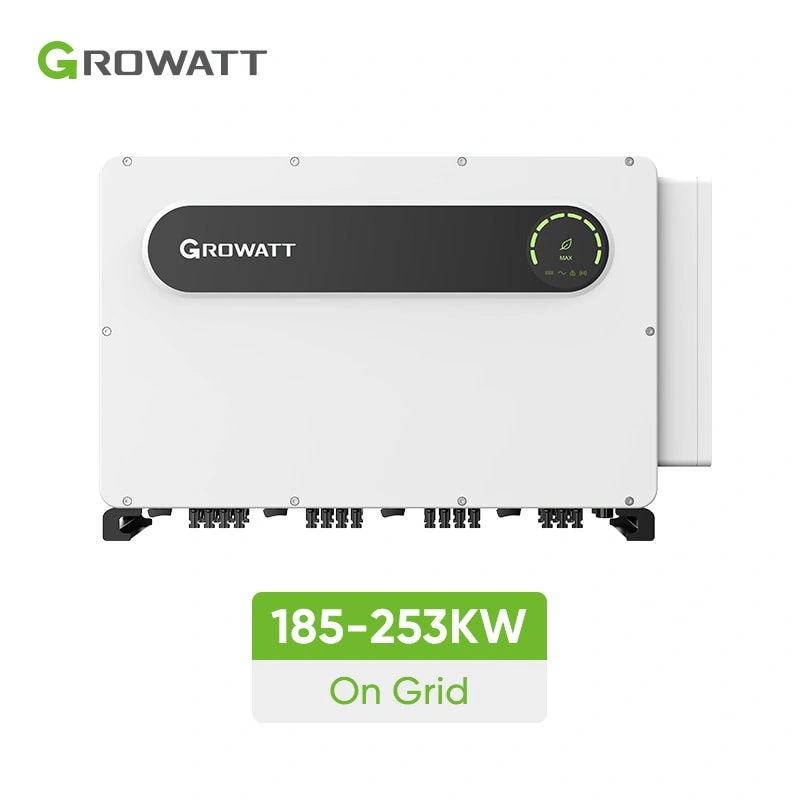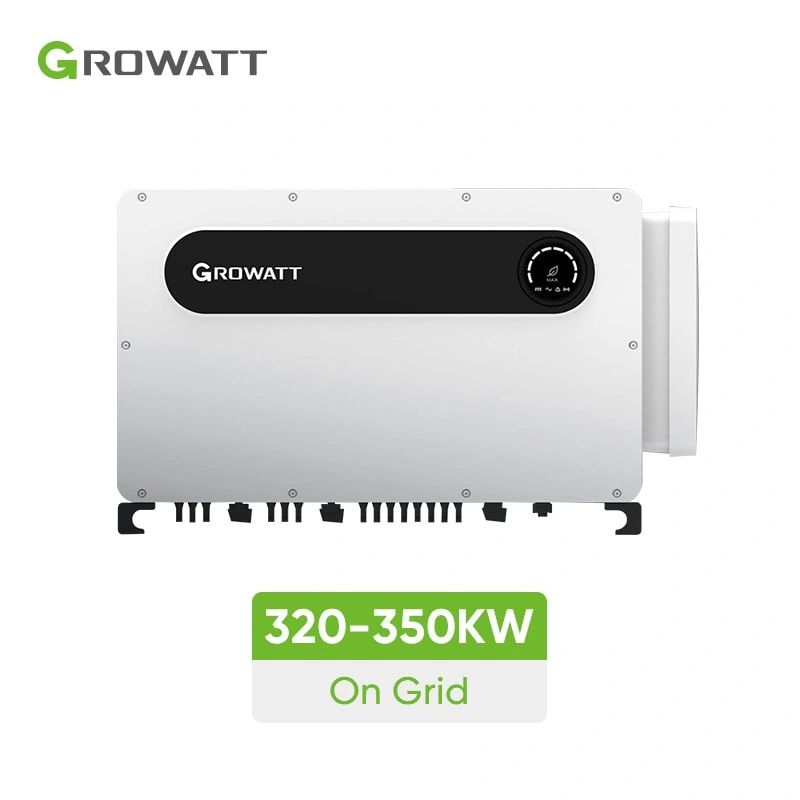| Datasheet | MAX124KTL3-XMV | MAX125KTL3-XMV | MAX136KTL3-XMV | MAX150KTL3-XMV |
| Input data (DC) | ||||
| Max. recommended PV power (for module STC) | 186000W | 187500W | 204000W | 204000W |
| Max. DC voltage | 1100V | |||
| Start voltage | 195V | |||
| Nominal voltage | 720V | |||
| MPP voltage range | 180V- 1000V | |||
| No. of MPP trackers | 10 | |||
| No. of PV strings per MPP tracker | 2 | |||
| Max. input current per MPP tracker | 32A | |||
| Max. short-circuit current | 40A | |||
| AC nominal power | 124000W | 125000W | 136000W | 1500000W |
| Max. AC apparent power | 136400VA | 137500VA | 150000VA | 165000VA |
| Nominal AC voltage(range*) | 277V/480V | |||
| AC grid frequency (range*) | 50/60 Hz (45~55Hz/59.5-60.5 Hz) | |||
| Max. output current | 164. 1A | 165.4A | 179.9A | 198.5A |
| Adjustable power factor | 0.8leading ...0.8lagging | |||
| THDi | <3% | |||
| AC grid connection type | 3W/N/PE | |||
| Efficiency | ||||
| Max.efficiency | 99.00% | |||
| European efficiency | 98.50% | |||
| MPPT efficiency | 99.90% | |||
| DC reverse polarity protection | Yes | |||
| DC switch | Yes | |||
| AC/DC surge protection | Type II / Type II | |||
| Insulation resistance monitoring | Yes | |||
| AC short-circuit protection | Yes | |||
| Ground fault monitoring | Yes | |||
| String detection | Yes | |||
| Anti PID function | Opt | |||
| Arc fault detection (AFCI) | Opt | |||
| Dimensions (W / H / D) | 970/640/345mm | |||
| Weight | 84kg | |||
| Operating temperature range | –30°C ... +60°C | |||
| Nighttime power consumption | < 1W | |||
| Topology | Transformerless | |||
| Cooling | Smart Cooling | |||
| Protection degree | IP66 | |||
| Relative humidity | 0~100% | |||
| Altitude | 4000m | |||
| DC connection | H4/MC4 | |||
| AC connection | OT Terminal connectors (Max. 240mm²) | |||
| Display | LED/WIFI+APP | |||
| Interfaces: RS485 / USB /PLC | Yes/Yes /Optional | |||
| Warranty: 5 years / 10 years | Yes /Optional CE, IEC62116, IEC61727, ROHS, UL1741, IEEE1547 | |||
Growatt 100kW–150kW Three Phase Inverter for Commercial Solar System
-
Q :
1. What's the target application for this inverter?
A :
It's ideal for large-scale commercial and industrial rooftop or ground-mounted PV systems requiring high reliability and performance.
-
Q :
2. What are the MPPT and string configurations?
A :
It includes 10 MPPT trackers and supports 2 strings per MPPT, enabling flexible PV array design.
-
Q :
3. How efficient is this inverter in real-world use?
A :
It offers up to 98.8% max efficiency and 98.5% European efficiency, with 99.9% MPPT accuracy.
-
Q :
4. Is this inverter grid-compliant in multiple countries?
A :
Yes, it meets IEC, VDE, CEI 0-21/0-16, UNE, G99, MEA/PEA and other major global grid standards.
-
Q :
5. What kind of protections are integrated?
A :
It includes reverse polarity, arc fault, ground fault, surge protection, and optional anti-PID and AFCI functions.
-
Q :
6. How is the system monitored and managed?
A :
Via RS485, USB, Wi-Fi, GPRS or 4G interfaces; compatible with Growatt Shine monitoring platform and app.
-
Q :
7. Is 150 kWh per day a lot?
A :
For business energy users, 150 kWh per day represents a moderate-to-high consumption level, depending on facility type and operational hours.
Residential context: Roughly five times higher than the average U.S. household’s daily use (~30 kWh/day).
Small commercial operations: This is equivalent to a continuous power demand of approximately 6.25 kW. This aligns with energy use for a small office (5–10 employees) with HVAC, computers, and lighting running 8–10 hours daily.
Light industrial or retail facilities: 150 kWh/day is typical for sites with limited machinery or single-shift operations.
Large industrial facilities: Considered low, likely powering a single production line or subsystem.
At this consumption level, companies can benefit from solar or battery integration. A 30–40 kW solar system could offset roughly 150 kWh/day in locations with 4–5 peak sun hours, reducing grid dependency and improving cost stability.
Q :
8. How long will a 100 kWh solar battery system last for my business?
A :
The runtime of a 100 kWh commercial solar battery system depends on your facility's power consumption. The estimation methods are as follows:
Power Consumption and Runtime
10 kW consumption: 100 kWh ÷ 10 kW = 10 hours
50 kW consumption: 100 kWh ÷ 50 kW = 2 hours
100 kW electricity consumption: 100 kWh ÷ 100 kW = 1 hourHow long is the lifespan of a 100 kWh solar battery system?
Lithium iron phosphate (LiFePO₄) batteries are commonly used in solar systems and typically have a lifespan of 15 to 20 years, which is equivalent to 6,000 to 10,000 charge-discharge cycles.
How can a 100 kWh system be scaled to meet commercial electricity demands?
Most commercial battery systems have a modular design that allows the capacity to be increased by connecting several units in parallel. Some systems can support up to five units in parallel, providing a total capacity of 500 kWh. This configuration is ideal for high-end applications such as shopping malls, office buildings, hotels and electric vehicle charging stations.
Cost and ROI considerations for a 100 kWh solar battery system
The cost of a 100 kWh battery system varies depending on the type, manufacturer and configuration of features. As of 2024, the average cost of lithium-ion battery packs is around $140 (£110) per kWh, meaning a 100 kWh system would cost approximately $14,000 (£11,000).
Solar battery systems deliver significant savings by reducing peak demand charges and enhancing energy efficiency. Some enterprises, have achieved a return on investment of up to 30% through optimised energy storage and consumption management.
What performance metrics should I consider?
Implementing solar photovoltaic systems can significantly reduce peak demand charges and enhance energy efficiency, achieving substantial cost savings. Some enterprises have achieved a return on investment of up to 30% by optimising energy storage and usage.
Consider the following performance metrics:
Efficiency: Select systems with high conversion efficiency to minimize energy loss.
Peak Power Handling Capacity: Ensure the system can withstand short-term power surges without compromising performance.
Environmental Adaptability: Select systems with appropriate protection ratings and temperature tolerance to suit the facility's environmental conditions.What certifications and warranty terms does Sunpal offer?
Our battery systems are certified to UN38.3, IEC 62619 and CE standards. Warranty periods range from five to ten years.
Related Products








